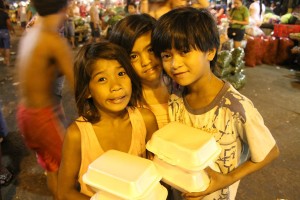
FAO calls for a greater focus on heading off food crises before they strike
Acting before shocks hit, instead of after disaster unfolds, is a more cost- effective humanitarian approach, agency tells UN General Assembly event
New York/Rome: The number of people trapped in food crises has continued to climb over the past 5 years, reaching 155 million people in 55 countries in 2020. Currently, over 41 million people are facing emergency levels of food insecurity and are at risk of falling into famine or famine-like conditions unless they receive immediate life-saving assistance.
Yet while humanitarian funding to the food sector grew from USD 6.2 billion to nearly USD 8 billion between 2016 and 2019, a significant shortfall persists, Paulsen noted – this despite ample evidence that anticipatory action to help vulnerable rural communities build their resilience before disasters hit is far more cost-effective than responding with aid after the fact.
“Better technology and data means we now have the tools to better understand – and predict – crises and their impact,” said Paulsen. “FAO has been doubling down on anticipatory action” and “putting our money where our values are,” he added.
He noted that with support from resource partners FAO invested USD 250 million in anticipatory action in 2020-21. This included acting early to contain a massive upsurge of crop- and pasture- eating desert locusts in East Africa via a control campaign that safeguarded the food security of 40 million people and avoided nearly USD 2 billion in losses.
Advances in technology and data now allow prediction and anticipation of many disasters before they strike, bringing human suffering – but use of these tools must be massively scaled up against the growing threats to rural livelihoods and food security, the Food and Agriculture Organization of the United Nations (FAO) has urged.
Faced with the increasing frequency, intensity, and complexity of the crises, “we cannot continue to rely on the same strategies we used yesterday – we have to innovate and invest more smartly and efficiently,” FAO Director of Emergencies and Resilience , Rein Paulsen, said in remarks at a High-level Humanitarian Event on Anticipatory Action on the sidelines of the UN General Assembly in New York.
What do anticipatory actions look like?
Anticipatory actions come in many shapes and sizes and are highly time-sensitive and connected to forecasts.
They can range from cash transfers that allow people to protect themselves and their animals to helping fishers store their boats and gear ahead of a storm, to backyard gardening kits that help families in war zones produce food closer to home ahead of spikes in conflict.
In pastoral communities, they often include animal feed and vaccines to keep essential livestock alive and healthy ahead of drought, while crop farmers may receive drip irrigation and drought‑resistant seeds.
Whatever the context, all anticipatory actions share the same goal: to protect vulnerable farmers, fishers and herders so that they do not lose their livelihoods and can continue providing food for themselves and their families.
Anticipating food crises
– In 2020 swarms of Desert Locust spread through the Horn of Africa, the Arabian Peninsula and southwestern Asia, threatening to devastate crops and livelihoods. FAO worked with governments to help contain the worst locust upsurge recorded in some areas for 70 years. Locust control operations prevented the loss of over four million tonnes of cereal and 870 million litres of milk production.
-On the Philippines island of Mindanao, FAO supported families caught between escalating local conflict and a looming drought with vegetable gardening kits and small community-run poultry farms near evacuation centres, providing families with food before they were cut off from their farms. Others who maintained access to their paddies received drought resistant rice seeds so they could plant. In all for every dollar FAO invested, Mindanao farmers received USD 4.4 in benefits and avoided losses.
-In Colombia, FAO used data from other UN partners and the Government to anticipate rising migration flows from Venezuela to the border region. FAO foresaw that communities on the Colombia side would not be able to produce enough food for the growing numbers of people arriving, and provided vulnerable families with seeds and tools to boost food production ahead of time. The initiative encouraged host communities and migrants to work together on training plots where they learned new farming skills and harvested the fruits of their collective labour.
-In the Sudan, an FAO-facilitated early warning system was triggered ahead of one particularly inadequate rainy season in Kassala, detecting unusual livestock movement, extended dry spells, and rising sorghum prices. FAO acted quickly to protect agropastoral communities and targeted 30 000 animals with livestock health kits, fodder and veterinary care before such trends resulted in a food crisis. For every USD 1 invested, farming families saw a return of USD 6.6 in avoided losses and added benefits.
– global bihari bureau





